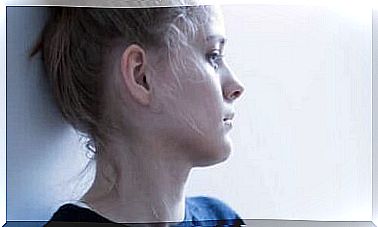How Do You Control Obsessive-compulsive Disorder?

First of all, know that controlling obsessive-compulsive disorder is very possible. However, those who have it and those around them often think that they are locked in a tunnel with no escape. Nevertheless, there are effective psychological treatments to deal with this difficulty.
Wikipedia tells us that obsession is “an idea or a feeling that imposes itself on the consciousness of the person who feels it as compelling and absurd, but which it fails to drive away”. In colloquial language, we speak more of mania than obsession. Indeed, the term “obsession” is reserved for a very strong and very disturbing mania or fixation.
Obsessive-compulsive disorder can be controlled
The two great fears of human beings are death and insanity. These two concepts imply a process of no return. In addition, they indicate a loss of self-control. It is this fear of madness that leads many patients to deny their obsessions. Or at least to refute the severity of their symptoms.
The truth is, not all obsessive symptoms are equally severe. The obsessive symptomatology is somewhat reminiscent of the famous Russian dolls. The symptoms overlap with each other until we get to the smallest. Obsessive-compulsive disorder is the most serious level. It manifests itself in incapacitating obsessions and compulsions.

Many people who suffer from obsessive-compulsive disorder often experience embarrassment and embarrassment. They are then reluctant to seek help. In addition, among those who had the courage to take a therapeutic approach, many were disappointed with the results obtained.
Indeed, some health professionals, even if they are well intentioned, are not always adequately trained to provide them with effective strategies. This type of experience often leads the patient to feel more pain and guilt. Eventually, he becomes discouraged and becomes suspicious. This is how many people lose hope and confidence in their ability to control obsessive-compulsive disorder.
In reality, there is still no medical cure. However, psychologists have some interesting tools to overcome obsessive-compulsive disorder. The treatment of choice is based on cognitive behavioral therapy.
Therapies for obsessive-compulsive disorder
Therapies from the cognitive-behavioral stream all have one element in common in their process of treating people with obsessive-compulsive disorders. Research by Dr. Lewis has indeed shown that behavioral therapy leads to positive changes in brain activity (Yaryura-Tobias & Neziroglu, 1997b).
Cognitive behavioral therapy helps the patient by providing the necessary tools to manage his obsessions without having to give in to his compulsions. Indeed, the fact of giving in to one’s obsessions is a behavior that reinforces these same obsessions. Regular use of certain techniques learned in therapy helps make symptoms more manageable.
However, successful behavioral treatment requires motivation and daily practice. When therapy is combined with drug treatment, the positive effects are all the stronger. This is because the drug acts on serotonin levels and stabilizes the patient so that therapy can help.
What is cognitive behavioral therapy for obsessive-compulsive disorder based on?
The main techniques for taming obsessive-compulsive disorder are exposure and response prevention. The purpose of the exhibition is to reduce the anxiety and discomfort associated with obsessions. This is a so-called habituation process. It is a natural process that blocks compulsive behavior in itself.
Concretely, it is a question of long exposure to anxiety and to situations of daily life that cause ritual behavior (compulsions). This is called the “in vivo” exposure. For example, in the case of an obsession with dirt. The person will be asked to touch a dirty object knowing that they will not wash their hands afterwards.
Gradually, the patient realizes that this type of gesture does not have dramatic consequences. He also realizes that at some point the anxiety he is feeling begins to decrease. Indeed, the body itself deactivates the alert mechanisms in a natural way. This is called the habituation process.
Ideally, the exhibition takes place in stages. Small steps that lead to the final goal. Namely, complete habituation to the feared object or situation. To do this, we establish a hierarchy of the exhibition. From the weakest to the most severe anxiety.

Prevention of rituals and cognitive changes
The goal of preventing rituals is to decrease the frequency of the latter. The patient is taught to use alternatives to compulsion when certain thoughts torment him.
The cognitive component of cognitive behavioral therapy involves modifying thoughts and false beliefs. However, it should be noted that cognitive therapy is only useful when combined with ritual exposure and prevention. Otherwise, the results observed will not be very convincing.
As we have seen, therefore, there are tools and approaches that can help to bring obsessive-compulsive disorder under control. In most cases, this involves techniques of exposure, response prevention, and modification of irrational beliefs.









